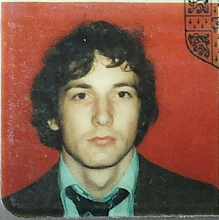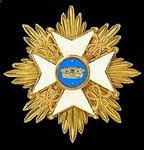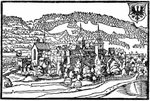One of the best of the locally-raised Provincial regiments, the New Jersey Blues were named after the blue coats they wore; blue became the commonest colour worn by provincial regiments towards the end of the war. They were at Oswego and Ticonderoga. In the field almost all provincial troops wore hunting shirts and buckskin breeches or Indian-style cloth leggings rather than their "full dress" regimentals. Even officers, who bought their own uniforms and therefore tended to be better dressed than the rank and file, wore hunting shirts and buckskin breeches on campaign.
This website: http://www.nj.gov/military/museum/frenchindian.html suggests they had a fairly rough war: "Indian raids along the colony’s northwest border in the summer of 1755 prompted the raising of a thousand man regiment of “Jersey Blues”, as well as a force to garrison forts along the Delaware. The Blues saw considerable combat. One detachment of the regiment was captured at Oswego in 1756 and another wiped out in a fight at Sabbath Day Point on Lake George in 1757. Another 300 were surrendered to the French at Fort William Henry in 1757 and some of these men were massacred by the Indians."
Monday, 27 September 2010
Private, New Jersey "Blues", North America 1755-1763
Posted by
David Morfitt
at
Monday, September 27, 2010
![]()
Subscribe to:
Post Comments (Atom)




















Hi David,
ReplyDeleteThat uniform would make for a very solid, "we mean business" looking outfit! Heartfelt sigh! I am sorely tempted to raise them in miniature. Now what was that web address for HistoriFigs? Their 25mm Scruby SYW figures would be perfect!
I had always heard that there was a heavy Lowland Scots influence in the cut of the coatee of this regiment. Is this true?
Hi Martin,
ReplyDeleteThanks for commenting; I quite agree! (The link you want is: http://www.historifigs.com/soldiers_of_the_seven_years_war.htm :-))
The influence was certainly Scottish but the reference is to a short Highland-style jacket in everything I've seen. Can you give me some pointers to references to claims of a Lowland influence, please? I'd be interested to see them; thanks. (I know there are very often conflicting materials about these things - it goes with the territory!)
Cheers,
David.
Sir David, Always a pleasure to see your talent on display...
ReplyDeleteThanks, Bill. :-)
ReplyDeleteI commented on your blog yesterday; I enjoy seeing your army raising and painting talent on display too!
All the best,
David.
Hi David,
ReplyDeleteIt turns out it's just me getting older. It appears that in the middle 1700's there was quite an influx of Lowland Scots settling in New Jersey, and yes, the coatee of the "Blues" WAS cut in the "Highland style". (Naw doout ta save a ha'penny, since it took less material than a full skirted regimental. Hoot Mon!) I wonder what the recruits thought about it, particularly after 1745, when the Lowlanders were very busy trying to distance themselves from the (mostly) Jacobite clansmen, by styling themselves "North British"?
Hi Martin,
ReplyDelete:-) Thanks for the information; it's good to know more. Perhaps the Scots desire to save money did have something to do with it - though cropping the coat tails was also common for British regular infantry in North America at the time as it made the coat more practical for the often densely wooded conditions on campaign. I think that the Highlanders also performed so well in the SYW that it was no longer so much of a stigma to be one!
Cheers,
David.